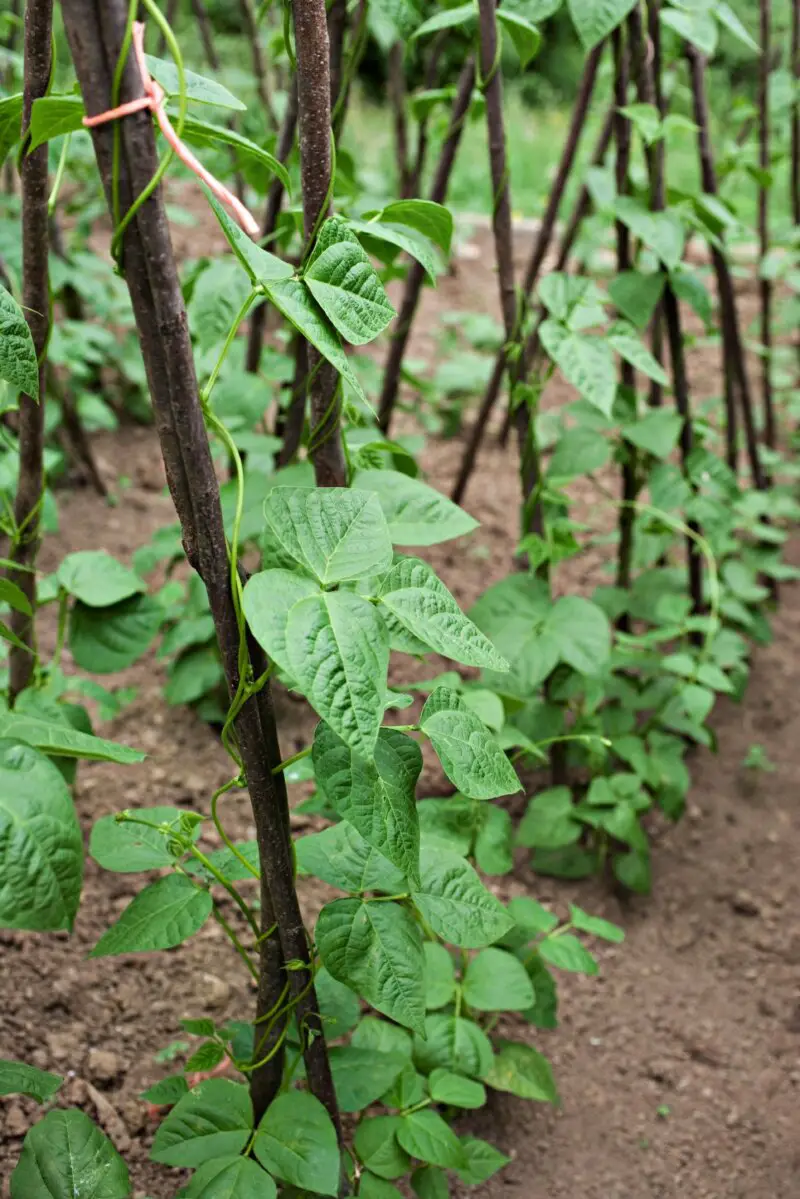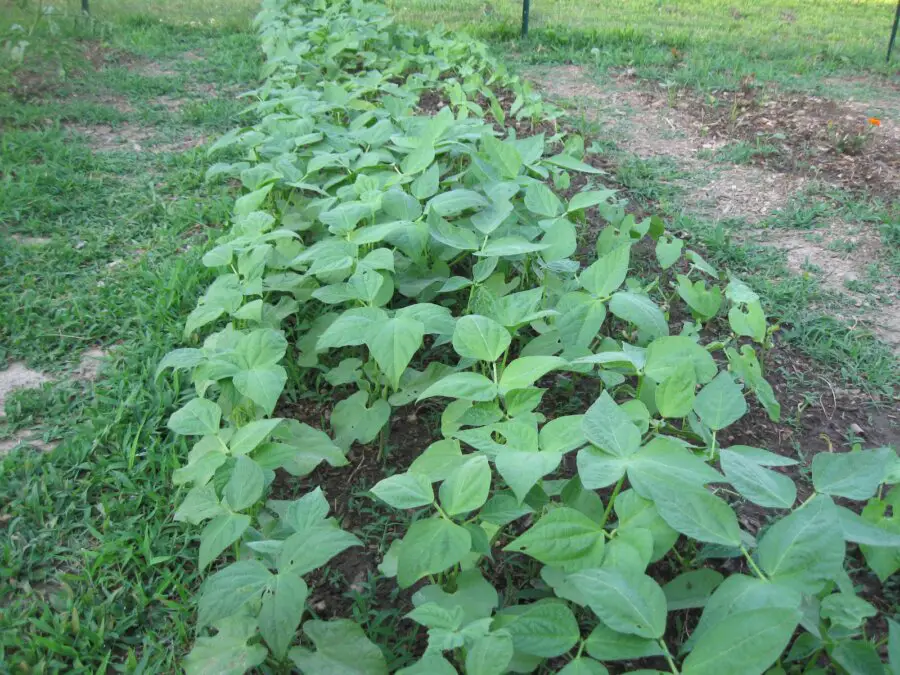Getting started in vegetable gardening can seem like a minefield. But getting your thumbs green is easy when you choose to grow green beans, otherwise known as string beans or snap beans.
Got no gardening experience? No problem. Growing beans is so easy that chances of failure are pretty darn slim. Even if your green space is limited, we have all the best tips to help you grow both bush beans and pole beans.
All you need to do is ask bush beans vs. pole beans; which annual is for you?
Are pole beans the same as bush beans?
It’s all in a name. Although from the same wax bean family, these two types of beans are different due to their growing style, categorized as either ‘pole’ or ‘bush.’
They are both easy to grow, but only one needs support. For example, pole beans grow via climbing vines that can reach between 10 to 15 feet tall. Their height means that pole beans need staking or trellis for extra support.

In contrast, bush beans grow closely, only reaching about two feet tall. Hence, no extra support is needed. Not only does this mean they differ vastly in how much room they take up in a garden, but they in their appearance.
If you’re still asking which is best, bush beans vs. pole beans, remember both beans are still straightforward to grow.
Are bush beans or pole beans better?
Deciding what varieties of beans are better is challenging; both bean plants have pros and cons. But the real question is, bush vs. pole beans, which produces more crops?
Generally, pole beans tend to yield more beans for a longer duration and are mostly free from disease. However, this fact means that pole beans will only produce for a month or two if you keep the crop, as their vines grow for more harvests.
However, if you’re looking for low maintenance, bush beans take less upkeep and are easier to grow.
Saying that bush means can yield a decent harvest, but all at once. So, you’ll need to stagger your plantings every two weeks to ensure you get a continuous harvest.
In terms of time, there is only a minimal difference in how quickly they yield a harvest.
Pole beans take slightly longer, taking 55 to 65 days to produce. At the same time, bush beans are only taking slightly less time, with production in about 50 to 55 days.
Will bush beans climb?
How much effort you want to put in will be a huge factor when deciding which beans to grow, bush beans vs. pole beans. Unfortunately, the answer is no; bush beans will not climb.
Bush beans will stop growing at about a maximum of two feet, therefore producing one crop of beans every few weeks.
Do bush beans need to be staked?
The fact that bush bean varieties don’t need to be staked makes them the perfect choice for container growers, small gardens, and beginner gardeners.
In addition, this lack of support means they are usually low maintenance. Although, it can be helpful to plant two rows of bush beans together for a little extra help.
Bush bean plants are smaller because they produce all of their crops in one go and then die back. The harvest is then done.
If you’re looking to grow bush beans at home, even a bucket full of six to eight plants will be enough for a good harvest.
What about pole bean varieties?
Who will win the fight of bush beans vs. pole beans often depends on how much and how long the beans will produce. Pole beans, otherwise known as vining beans, will continue to grow until affected by frosts.
As long as they grow, they’ll continue to produce beans. A fact that means the crop can persist for months rather than weeks. But as you may already have gathered, you’ll need to grow your pole beans up canes, bamboo poles or trellis.
Although needing slightly higher maintenance than bush beans, you can still plant pole beans in grow containers and small spaces. However, to keep your pole beans producing plenty of crops and avoid stringy beans, make sure to pick your pole beans regularly.
Unfortunately, the only real disadvantage to growing pole beans is that they can be pretty vulnerable to the wind. So, if your area suffers a lot of wind, you might choose bush beans over pole beans.
How much space do bush beans need?
That’s the great thing about sowing bush beans; you don’t need much room. Bush bean seeds only need to be sewn in about one inch deep and two inches apart in rows 18 inches apart.

Hence, bush beans grow superbly in smaller garden beds and raised beds where the germination of tiny beans don’t take up too much space.
But this doesn’t mean you can’t plant bush beans in huge gardens as the perfect opportunity to plant your bush beans in double rows.
Can bush beans turn into pole beans?
There are no stupid questions in gardening. Many people also wonder if bush beans can turn into pole beans.
Well, in a way, they can. Although bush beans were developed from pole beans to provide condensed and easier harvests, they can sometimes revert to a form of pole beans.
Now and again, they’ll pick up their predecessors’ traits, such as stretching and growing a little tall and lanky. Then, eventually, they settle into a sort of compact bush.
This effect can make your bush bean look like a pole bean.
How do you eat bush beans?
Bush beans vs. pole beans; if you still can’t decide which to plant, you should consider how you plan to eat them. Think about it, do you want to eat them fresh, or do you want to be able to dry them?
Of course, both types of beans can be eaten fresh, but pole beans are far more suited for drying for storage than most kinds of bush beans. You can also freeze your pole beans, but the fact that you need to harvest beans in stages means they can be a bother for freezing.
But the beauty of bush beans is that you harvest and freeze them all at once. So the good news is bush beans can be eaten fresh or frozen.
